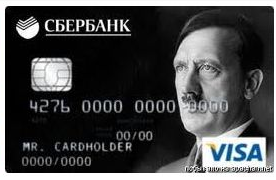Card games
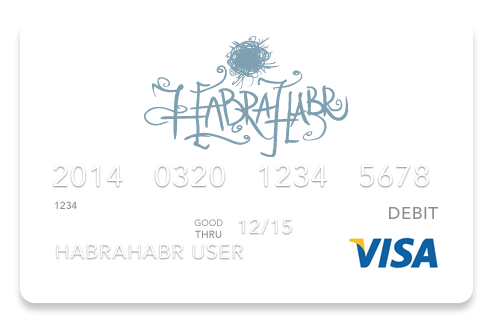
Once the previous article about an ATM caused a certain interest, then we continue the banking theme. “Plastic card” is the name of a bank payment card (BOD) . The thing in the household is extremely useful - after all, it can be perfectly used to
Cards
The main distribution in the CIS was received by the payment system cards Visa and MasterCard / Europay. The card is owned by the bank that issued it and to the client it is issued only for the duration of this card. If we discard some nuances, the cards are divided into two types - debit and credit. In Europe / USA - if you have a Gold / Platinum card, etc., then you have a solid credit limit, then you are a respected person, you will smile wider and everyone understands that you have a lot of soul. In any case, it was before. In the CIS, any student will open a Gold card for himself free of charge in order to impress friends after an evening drinking beer and in this way destroys the entire western value system.
Cards can be only with a magnetic strip, or else with a chip. The one with the chip is right in the case of disputes. If your card is with a chip, and the ATM does not have a corresponding reader, then you are right. If on the contrary - the rights of the ATM. There are not so many ATMs / terminals serving chip cards in Ukraine - for me personally, for example, it can be difficult to withdraw money - you have to look for it. When trying to remove in a non-supporting device - the amount may be blocked. It happened. For 30 days. Unpleasant
')
Magnetic strip in the map is quite difficult to demagnetize. Local payment cards are more susceptible to this (somehow I will tell about them later) , but over the course of several years I only had one international payment card that has demagnetized. By that time, about 15 thousand of them had passed through me personally, so I think this is not much.
Maps are also used in access control systems. If an ATM is in the lobby of a bank, then at night - you can get there (if provided) by swiping a card on the device at the entrance. The device is suitable card of any bank (for homeless people on the note - in the halls of branches is warm and cozy) .
In ATMs of another bank it is not always possible to see the balance on the card. In general, ATMs are not set up for their customers, but for others - to earn money on (actually quite a good) commission. The average return on ATM (if you count the dirty commission) in 2004-2007 was about 4-5 years. My first accountable ATM, installed in 2002, paid off only in 2006. Of course, there are indirect savings - on unloading the cashier, round-the-clock work again ... but there are also costs for collection, maintenance, etc.
If you try a card that is listed as stolen, inserted into the ATM - then he will take it without talking. If through the POS-terminal - from the cashier will be highlighted - remove the card. At the same time, this information is also highlighted in the processing center - and the duty operator can call law enforcement agencies to detain the fraudster at the point of sale / department. If the cashier
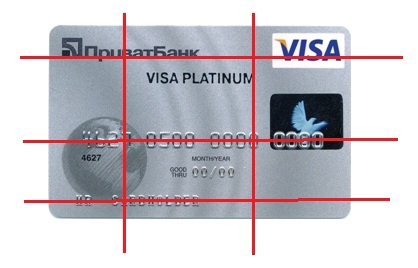
When a card is rented to a bank, it is supposed to destroy it. For example, in the shredder. Often, shredders do not happen, so harsh scissors are used. Plastic is hard, cards at the end of the month can accumulate 400-600 pieces - and you need to cut it so as to damage the magnetic strip, the card number and the name of the owner.
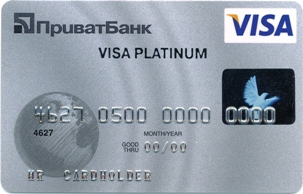
Look at your map. It has a card number. The first digit - 4 - this is Visa, 5 - MasterCard, 6 - Maestro, etc. The first six digits are the BIN of the bank. There are reference books. The map has its date of validity. The card is valid until the last calendar day of the month that is specified. If you received a new card before the expiration of the old one, then the old one will still work, but when you make the first operation on the new card, the new one will start working. Banks receive (buy) keys for generation for a certain period. For a year / two / five. The maximum period for which cards are issued depends on this.
The inscriptions on the card can be simply printed or extruded (embossed). Why is this necessary?
Imprinter
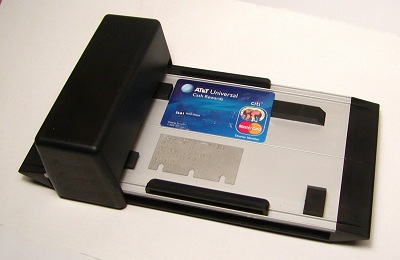
Historical device. The first appeared in the 40s, but successfully worked in the two thousandth. Maybe where they work today. On the imprinter it is screwed up with the cliché of the outlet / bank department, on which the identifying information of the outlet is also pressed out. The customer’s card is placed in a special niche; “ Slip ” is a self-copying form, we roll on top and we get an impression on the blank data of the map and the outlet. Calculated. Lately cards (especially low level) are issued with the printing of identification information, and not extrusion. Although I like the “ old-style ” more subjectively.
Processing center
Cards are counted and serviced not at banks, but at processing centers (PC). This is quite a complex organizational and technical institution. Only large banks can afford to organize their own PC. Small banks - enter into contracts for servicing someone else's PC. In addition to the cards, processing also serves all devices for interacting with payment systems - ATMs, POS-terminals and systems, software systems. In the bank, the client opens a current account and issues a card. Theoretically, it is possible that the current account of two clients in different banks will be the same (in fact, the chance is even less, because the account number has control figures, in the calculation of which the bank code is used, but the check figure may also coincide ....) - talking about the fact that both of these banks can work with a single PC. So - the card has its technical account in the PC, which the client may not even guess. Therefore, all operations with the card in the HRC are carried out on this technical account. When funds are credited to the card, the bank informs the PC that it is necessary to credit the funds to such a technical account. Thus, there is double counting - inside the bank and within the PC (more precisely, the entire payment system) .
Bank
Banks, as a rule, print (emit / emboss) their cards themselves. The PC generates information about the generated cards and PIN codes - the bank charges its aggregate - the cards are embossed and the codes are printed. The average performance of 400 cards per hour. You make a mistake when ordering a card and write in the name of the owner any numbers or punctuation marks - it turns
Minute of humor.
Correctional Facility. All prisoners are paid salary for work performed. Pennies, but for the whole term they accumulate some sums. The bank (not mine) concludes a salary project with the Department for the Execution of Sentences and all the prisoners print cards. Lot. Lots of. Printed, brought to issue. The head of the colony took the first available card and didn’t have enough of a blow. Having said a few unprintable words, he wondered how he would issue these cards to his wards? I had to get away completely empty and reprint all the cards.
Under the spoiler - you can find out the cause of the disorder of the head of the colony.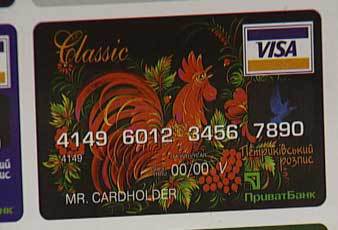
I think no explanation

I think no explanation
Scammers
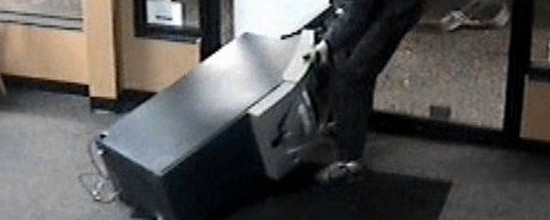
In comments to the last article there was an interest in fraud and hacking. So, regardless of the feature films and fables on the Internet, life has shown that there are actually only two options for expropriation. In the first you need to work with your hands, and in the second - with your head.
In the first case, it will be a banal robbery. ATM piece is heavy - 900-1200 kilograms - average weight. Plus, he is usually bolted to the floor conscientiously. There really is enough imagination. A harpoon breaks through the screen of a street shop ATM. Cable. Truck. On a dash. With a screech winch tighten the ATM on the platform of the truck and feet. In a quiet, relaxed atmosphere, slowly, open the safe. Or at the aircraft factory - a group of highly skilled mechanics and turners of the sixth category open factory ATM in the shop and withdraw the contents without unnecessary noise. Our people brainy.
In the second case - talking about the theft of personal data on the cards. This information is not stored in banks. Very fantastic - to steal a database directly from the PC (certainly not remotely, but from the inside) - but it also happens. Often, all the more landed and we will talk about skimmers and linings.
Anti ATMs often hang on ATM banks. But visually, skimmers can also look like this. And build your skimmer into the anti-skimmer is quite simple. He himself is very thin. Its task is to count the magnetic stripe in the card and record it to yourself (less often) / transfer via Wi-Fi (more often). But magnetic stripe is not enough. Need a PIN. So it will be a miniature video camera (built anywhere) or a spy (through binoculars from the window of the house opposite) .
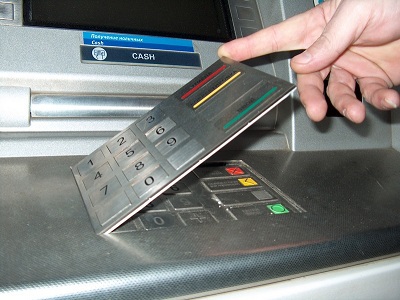
It can also be a pad on the keyboard. But it's harder. In itself, the pad thing is quite expensive - a few thousand euros can be worthy models. Therefore, if you find an overlay on the keyboard - it is better to pretend to be a monument and, without shining, leave, because There is a group of students who drink beer on a bench or a group of gloomy men in leather jackets — she’s here for a reason, and to control the situation, so that no one squeezes a valuable thing.
A curious eye will almost always determine that there is a pad on the ATM - because it is very difficult to adjust the top ATM panel precisely - it is hard work, and the task is to quickly get a set of data and go to another ATM.
In general, it is always necessary to proceed from the fact that a skimmer in an ATM is and is a miniature camera (technologies do not stand still) . Therefore - withdraw money from tested ATMs, the appearance of which you remember, close the keyboard with your other hand / wallet when you enter the code - and the chance to suffer is minimal.
A separate topic is fake ATMs, but the chance of finding ATMs in our dump is extremely small - so this topic is more popular for European countries. This is when there is an ATM on the street - you come up to withdraw money - he asks a pin-code, the amount of withdrawal, but at the end he writes - something from the “communication error” series and you calmly go to another ATM. And your data has already been transferred to anyone.
As for hacking on the network / Internet - the chance is negligible. Even being in the same network with an ATM and putting a sniffer and having all the traffic - it takes a lot of work to decrypt it and then you need to study all exchange protocols - because will have to simulate the exchange between the PC and ATM with this particular card ... By that time, you will already be working on serious work under serious supervision.
In short, Sklifosovsky!
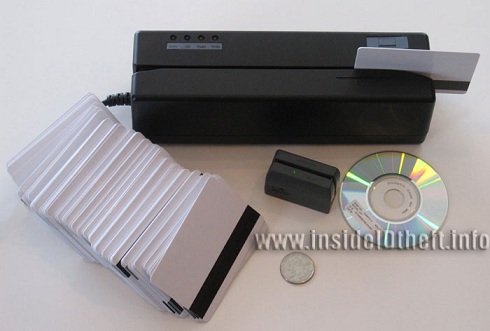
What do the received card data and PIN codes do? White plastic. It is written magnetic stripe from the card. It turns out a clone. We go in a third world country and remove money via ATM from the card (knowing the PIN) . This is done massed by organized groups. Everyone gets their share.
Separately, I note cardholders (especially older ones) who write (scratch) a PIN on the card. I will not say anything about them - just to note. The top of cynicism is to scratch the wrong code.
At one time, I had the opportunity to administer a local payment system in a bank for two years. To myself, the point of issuance, processing, your banking day, autonomous accounting, balance, points of issue and service. Specific equipment. But that's another story. I'll tell you later.
Bonus - common button accordion in narrow circles (but little known to the general public) - PSD template for drawing your own VISA card design
Source: https://habr.com/ru/post/216637/
All Articles
